Rainwater harvesting
In its origins, humanity used surface water, but as it spread geographically and the different civilizations were born, settling in semi-arid and arid zones, different ways of extracting water from the subsoil and rainwater harvesting were developed. In recent years, the shortage and contamination of surface and underground water, as well as the lack of connection to hydraulic networks in certain towns, has led to the resumption of the practice of collecting rainwater.
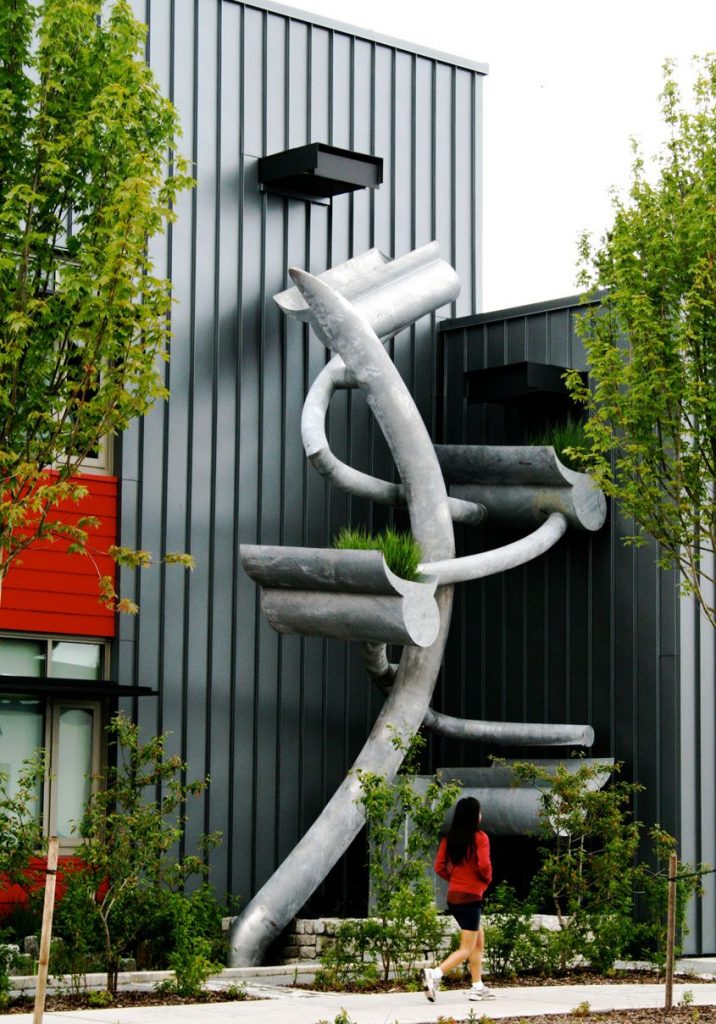
“Thorton Creek” Seattle, Washington.
By: Stephen Glassman Studio
Photography: https://www.sgstudio.la/thornton-creek/
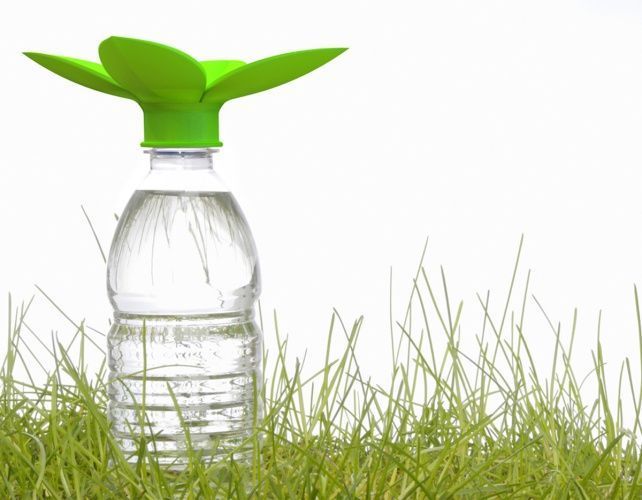
“PetalDrops” Personal Rain Harvester.
By: Quirky
Photography: https://decoratrix.com/petal-drops-recicla-el-agua-de-lluvia
Many architects and designers have recognized the importance of this practice, thus designing buildings, houses, bus stops, sculptures, urban equipment, and furniture that capture and store rainwater, contributing to optimize the use of water. There are even some buildings and homes that are self-sufficient in terms of water consumption, by making the rainwater drinkable through filtration and disinfection systems.
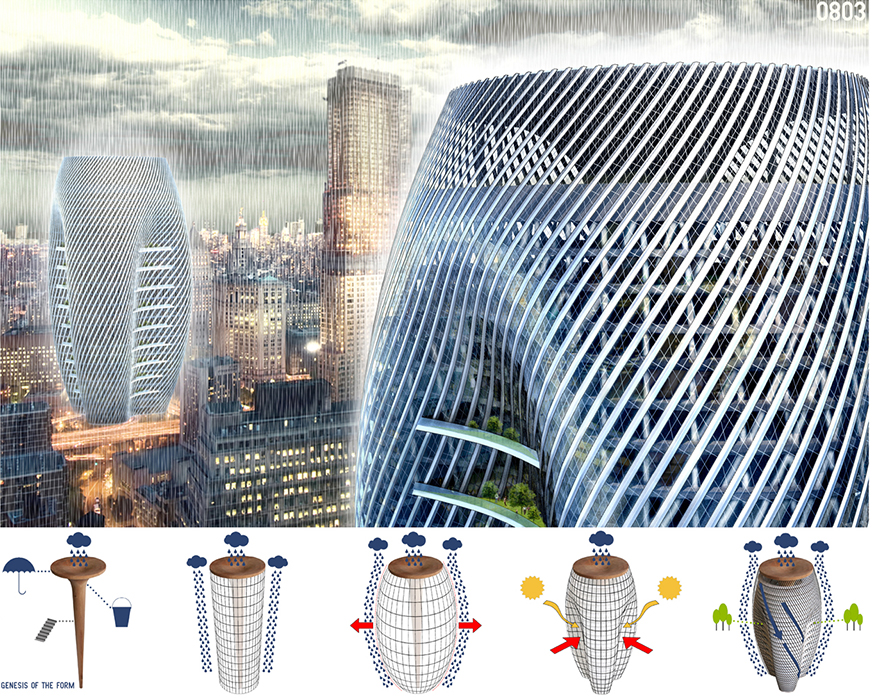
“Rain-Collecting Skyscraper”.
By: Ryszard Rychlicki and Agnieszka Nowak
Photography: http://www.evolo.us/wp-content/uploads/2010/03/rain-skyscraper-2.jpg
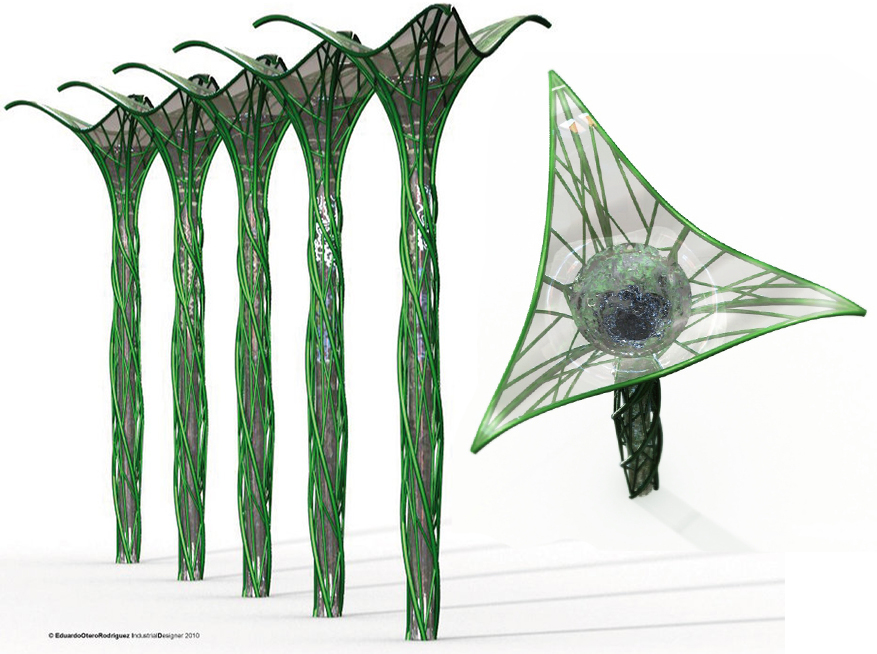
“Agua in situ”. Sustainable design, aimed to supply water for poor people in Southern Colombia where a water management system does not exist.
By: Eduardo Otero Rodríguez
Photography: https://www.coro f l o t .com/di_eduardor/Agua-in-situ
Currently there are many rainwater catchment systems. One of the most used is the harvesting of rainwater from roofs of houses and buildings, storing it in a tank (such as cisterns, flowerpots, garbage cans and barrels), and then using it to water plants, washing vehicles and terraces, flushing toilets, washing clothes, among others.

“Minimal Raindrop”
By: Studio Bas Van Der Veer.
Photography: https://www.omega-pure.com/raindrop-brings-rainwater-harvesting-at-its-stylish-best-to-your-garden/view-gallery/
There is no doubt that the collection of rainwater is an ecological practice that helps to reduce the demand for drinking water supply, thus reducing the need to exploit natural sources for the extraction of this vital liquid and, therefore, contributing to the preservation of water resources.
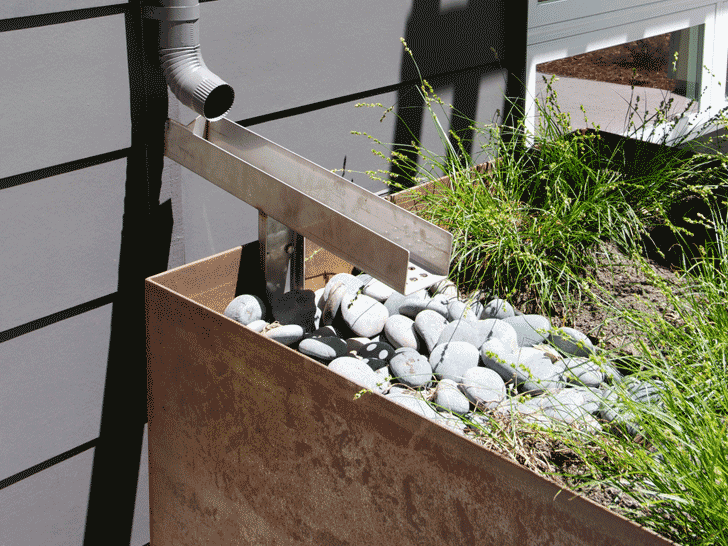
Tassafaronga Housing Village in Oakland, CA. Bioswales, defined as sloping drainage areas filled with vegetation, flank the development’s streets collecting the runoff and removing pollutants from it.
Photography: https://zoeyzan.wordpre s s .com/2015/02/16/week-20-splintering-urbanism/








